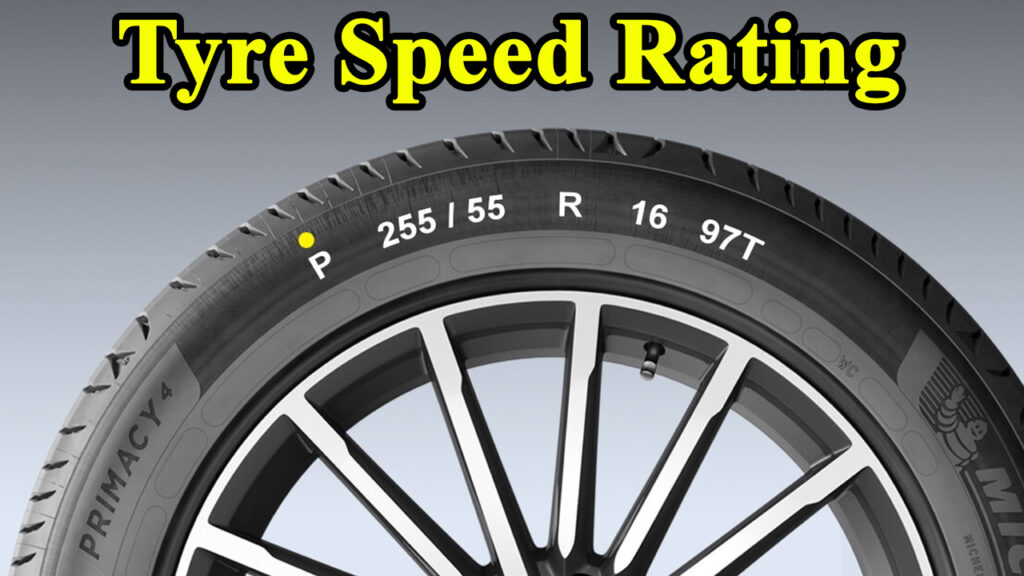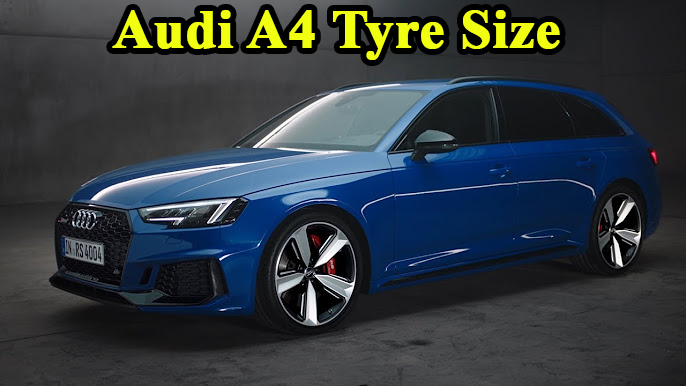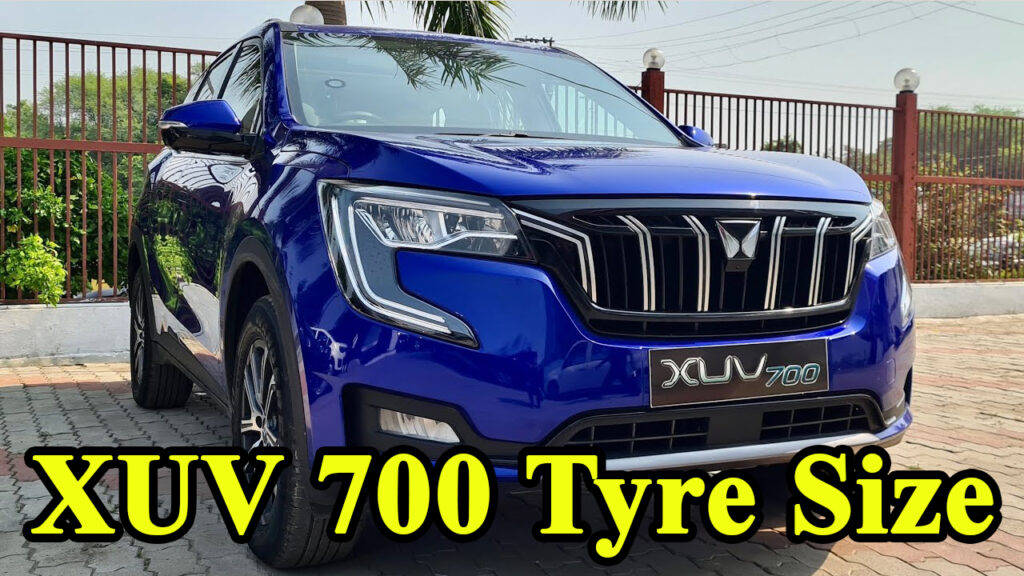As a car enthusiast and someone who’s spent countless hours both on the open highways and navigating the bustling city streets of India, I can tell you that few components of your vehicle are as critical yet as overlooked as your tyres. And within the world of tyres, the “speed rating” often remains a mystery, a cryptic letter on the sidewall that most drivers tend to ignore. But let me assure you, understanding tyre speed ratings isn’t just a technicality; it’s a cornerstone of vehicle safety, performance, and even your wallet.
This isn’t going to be a dry, textbook explanation. We’ll dive deep, exploring what tyre speed ratings truly mean, why they matter, and how to make informed decisions that ensure your driving experience is as safe and exhilarating as it can be, especially on India’s diverse and sometimes unpredictable roads.
What Exactly Is a Tyre Speed Rating?
Imagine your tyres as high-performance athletes. Each athlete has a maximum speed they can sustain without faltering. The tyre speed rating is precisely that – a letter code indicating the maximum speed at which a tyre can safely operate for a sustained period under its recommended load capacity and proper inflation, without compromising its structural integrity or performance.
It’s crucial to understand that this isn’t about how fast your car can go; it’s about how fast the tyre itself can handle the stresses of speed. As a tyre rotates at high speeds, it generates heat. This heat can be detrimental, leading to tread separation, blowouts, and a catastrophic loss of control. The speed rating signifies that the tyre has been rigorously tested in laboratory conditions to withstand these heat build-ups and maintain its shape and grip at the designated speed.
You’ll find this rating on the sidewall of your tyre, usually as the last character in a series of numbers and letters like “P205/55R16 91V”. In this example, the “V” is the speed rating.
Unraveling the Alphabet: A Closer Look at Speed Rating Chart
The speed rating system uses letters from A to Y (and sometimes a ‘Z’ or ‘(Y)’ for extreme performance), with each letter corresponding to a specific maximum speed in km/h. It’s not always a straightforward alphabetical progression, as some letters were introduced later to accommodate ever-increasing vehicle speeds.
Here’s a common speed rating chart you’ll encounter:
Personal Touch: I remember once, during a college road trip from Delhi to Jaipur, a friend confidently bought “cheaper” tyres for his sedan, assuming all tyres were pretty much the same. He didn’t pay attention to the speed rating. On the open stretch of the Delhi-Jaipur highway, as we approached speeds of 120-130 km/h, his steering felt a bit “floaty,” and the car seemed less stable. Later, we realized he had put on ‘S’ rated tyres (max 180 km/h) on a car that was originally fitted with ‘H’ rated tyres (max 210 km/h). While the car’s top speed wasn’t the issue, the tyre’s construction for sustained higher speeds was. It was a subtle difference, but one that could have been risky. This incident truly cemented for me the importance of these seemingly small details.
Why Do Speed Ratings Matter So Much?
1. Safety: Your First Line of Defense
This is paramount. Exceeding a tyre’s speed rating can lead to:
- Excessive Heat Buildup: As mentioned, higher speeds generate more heat. A tyre not designed to dissipate this heat efficiently will overheat, weakening its internal structure.
- Tread Separation: Overheating can cause the layers of rubber and steel belts within the tyre to separate, leading to a dangerous blowout.
- Loss of Control: A tyre failure at high speeds can result in a sudden and severe loss of vehicle control, potentially leading to serious accidents.
- Compromised Handling and Braking: Tyres with lower speed ratings might have softer sidewalls, affecting steering response, cornering stability, and even braking distances, especially in emergency situations. Imagine needing to brake suddenly on a crowded highway near a city like Mumbai or Bangalore – every meter counts.
2. Performance: Beyond Just Speed
It’s a common misconception that speed rating only relates to a tyre’s top speed. In reality, higher speed-rated tyres often boast:
- Better Handling and Grip: They are typically constructed with stiffer sidewalls and more advanced rubber compounds that provide superior grip and responsiveness, even at lower speeds. This translates to a more precise feel behind the wheel, especially when navigating winding roads or making quick maneuvers.
- Enhanced Cornering Stability: The robust construction of higher speed-rated tyres helps them maintain their shape and provide better stability during aggressive cornering.
- Improved Braking Performance: While not directly a braking component, the enhanced grip and stability of higher speed-rated tyres can contribute to shorter braking distances, a critical factor for safety.
However, there’s a trade-off. These performance benefits often come with:
- Stiffer Ride: The stiffer sidewalls can sometimes lead to a slightly harsher ride, especially on Indian roads, which are not always perfectly smooth.
- Faster Tread Wear: The softer, grippier rubber compounds used in high-performance, high-speed-rated tyres tend to wear out more quickly.
3. Legal and Insurance Implications in India
While specific legal mandates for tyre speed ratings can vary globally, in India, it’s generally understood that you should always adhere to the manufacturer’s recommended tyre specifications, including the speed rating.
- Vehicle Manufacturer’s Recommendation: Your vehicle’s owner’s manual or a placard inside the driver’s side door will clearly state the original equipment (OE) tyre specifications, including the speed rating. Deviating from these can be problematic.
- Insurance Validity: This is a crucial point. Many insurance policies may include clauses that could invalidate your claim if an accident occurs and it’s found that your vehicle was fitted with tyres below the manufacturer’s recommended speed rating. Insurance companies argue that such tyres compromise vehicle safety and performance. This is a risk you simply cannot afford to take, especially given the rising cost of vehicle repairs and medical expenses.
4. Value and Longevity: The Price of Performance
Higher speed-rated tyres, due to their advanced construction and materials, generally come at a higher price point. For instance, an ‘H’ rated tyre might be noticeably more expensive than an ‘S’ rated one of the same size.
Originality: While it might be tempting to opt for a lower speed-rated tyre to save a few hundred rupees, consider the long-term implications. As an expert, I’ve seen countless drivers regret this decision. The false economy of a cheaper tyre with a lower speed rating can lead to:
- Reduced Tyre Life: As mentioned, softer compounds wear faster.
- Compromised Safety: This is non-negotiable.
- Potential Insurance Issues: A direct hit to your financial security in case of an accident.
Case Study: A friend of mine, a taxi driver in Bengaluru, used to frequently replace his tyres with budget options that had a lower speed rating than recommended for his sedan, primarily to save costs. He primarily drove within the city, so he figured high-speed ratings weren’t necessary. However, after experiencing quicker wear on the tyres and noticing a slight decline in handling during heavy monsoons, his mechanic advised him against it. The mechanic explained that even at city speeds, the tyre’s construction (influenced by speed rating) impacts heat dissipation and overall durability, especially with continuous stop-and-go traffic and occasional longer runs. He switched back to the recommended rating, and while the upfront cost was a bit more, he reported better tyre life and improved confidence in wet conditions.
Choosing the Right Tyre Speed Rating for Your Car in India
Now that we understand the ‘why’, let’s talk about the ‘how’.
- Consult Your Owner’s Manual/Tyre Placard: This is your primary source of truth. Your vehicle manufacturer has meticulously tested and determined the ideal tyre specifications for your car.
- Match or Go Higher (with Caveats):
- Match: Ideally, replace your tyres with the exact same speed rating as the original equipment.
- Go Higher: You can go for a tyre with a higher speed rating than recommended. This often means enhanced performance (better handling, grip) due to the tyre’s more robust construction. However, be prepared for a potentially stiffer ride and faster wear. It’s usually not necessary for average Indian driving conditions, but enthusiasts might consider it.
- NEVER Go Lower: As strongly emphasized, fitting tyres with a lower speed rating than recommended is a serious safety hazard and can lead to the issues discussed above, including insurance invalidation.
- Consider Your Driving Habits:
- City Driving (predominantly): For daily commutes in urban areas, where speeds rarely exceed 80-100 km/h, a tyre matching the OE speed rating (often S or T for many hatchbacks and sedans) is perfectly adequate and offers a good balance of performance and comfort.
- Highway Driving (frequent): If you often embark on long highway journeys, even if you adhere to speed limits, the sustained high speeds warrant tyres that can handle the heat. Sticking to the OE rating or even considering one step higher might offer added peace of mind. For example, if your car came with ‘H’ rated tyres, and you frequently drive long distances at 100-120 km/h, sticking with ‘H’ is wise.
- Performance Driving/Enthusiast: If you own a performance car and enjoy spirited driving on appropriate roads (like a track day), then higher speed-rated tyres (V, W, Y) are essential to extract the car’s full potential safely.
Common Misconceptions Dispelled
- “Higher speed rating means I can drive faster.” Absolutely not. The speed rating is the tyre’s limit, not a license for you to break speed limits. Your vehicle’s mechanical capabilities, road conditions, and traffic laws always dictate your safe driving speed.
- “All tyres with the same speed rating perform identically.” While they meet the same minimum speed standard, tyre manufacturers use different compounds, tread designs, and construction techniques. A ‘V’ rated tyre from a premium brand like Michelin or Pirelli might offer significantly better grip, braking, and comfort than a ‘V’ rated tyre from a lesser-known budget brand.
- “Only sports cars need high speed-rated tyres.” Not true. While performance cars certainly need them, many modern family sedans and even some SUVs come with relatively high-speed ratings (H or V) as original equipment due to their potential top speeds and the need for stable handling.
The Human Element: My Experience and What I’ve Learned
Having been a petrolhead in India for years, I’ve seen the evolution of tyres and the importance of seemingly minor details like speed ratings. There was a time when information wasn’t as readily available, and tyre choices were often based on price or hearsay. But with more discerning drivers and better access to information, people are realizing that tyres are not just round, black objects; they are a complex engineering marvel that connects your vehicle to the road.
I vividly recall a conversation with a tyre dealer in Chennai who runs a multi-brand outlet. He shared how many customers, initially, would just ask for “the cheapest tyre.” But over the years, he’s seen a shift. Now, more people come in with their owner’s manual or a clear understanding of their car’s OE specifications. He emphasized that for him, as an expert, guiding a customer to the right tyre, not just any tyre, is paramount for their safety and his reputation. He often uses real-world examples – like the time a customer’s old, low-speed-rated tyres gave way on a highway near Coimbatore due to excessive heat, luckily without incident, just a flat. It drives home the message that cutting corners on tyres is cutting corners on safety.
Conclusion
Tyre speed ratings are more than just an alphanumeric code; they are a critical indicator of a tyre’s capabilities and, by extension, your vehicle’s safety and performance envelope. In a country like India, with its varied terrains, unpredictable traffic, and sometimes demanding driving conditions, choosing the right tyres, with the correct speed rating, is not just advisable – it’s imperative.
Always prioritize matching or exceeding your vehicle’s manufacturer-recommended speed rating. While premium tyres with higher ratings might cost a little more, the added safety, performance, and peace of mind they offer are invaluable. Think of it as an investment in your safety and the longevity of your driving pleasure.
Next time you look at your tyres, remember that small letter on the sidewall holds a world of engineering and safety information. Understand it, respect it, and drive with confidence.
Frequently Asked Questions (FAQs)
1. Where can I find my car’s recommended tyre speed rating? You can find it in your vehicle’s owner’s manual, on a sticker inside the driver’s side door jamb, or sometimes on the fuel filler flap.
2. Can I use a tyre with a lower speed rating than recommended by the manufacturer? No, it is strongly advised against. Using a lower speed-rated tyre can compromise safety, handling, and braking performance, and may even void your car insurance in case of an accident.
3. What happens if I exceed my tyre’s speed rating? Exceeding the speed rating can lead to excessive heat buildup within the tyre, potentially causing tread separation, blowouts, and a dangerous loss of control. It significantly increases the risk of tyre failure.
4. Do higher speed-rated tyres offer better performance even at normal speeds? Generally, yes. Higher speed-rated tyres are often built with stiffer sidewalls and more advanced rubber compounds, which can translate to better handling, more precise steering, and improved grip, even at lower speeds.
5. Will a higher speed rating affect my car’s fuel efficiency? While the primary impact on fuel efficiency comes from rolling resistance (another rating on tyre labels), tyres with higher speed ratings can sometimes be slightly less fuel-efficient. This is because their stiffer construction and potentially softer compounds might increase rolling resistance compared to a tyre primarily designed for maximum fuel economy. However, the difference is usually marginal for most passenger vehicles.
6. Do all four tyres on my car need to have the same speed rating? Yes, it is highly recommended that all four tyres on your vehicle have the same speed rating. Mixing different speed ratings can lead to inconsistent handling, braking, and overall vehicle instability. If you must mix them (e.g., in an emergency with a spare), always put the lower speed-rated tyre on the front axle and drive at the maximum speed of the lowest-rated tyre. However, this is not ideal for long-term use.
7. How often should I check my tyre’s speed rating? You don’t need to “check” it regularly in terms of its value, as it’s a fixed characteristic of the tyre. However, you should always ensure that any replacement tyres you purchase match or exceed the speed rating recommended by your vehicle manufacturer. Regularly inspect your tyres for wear and damage, as a worn or damaged tyre will not perform to its rated capabilities.




